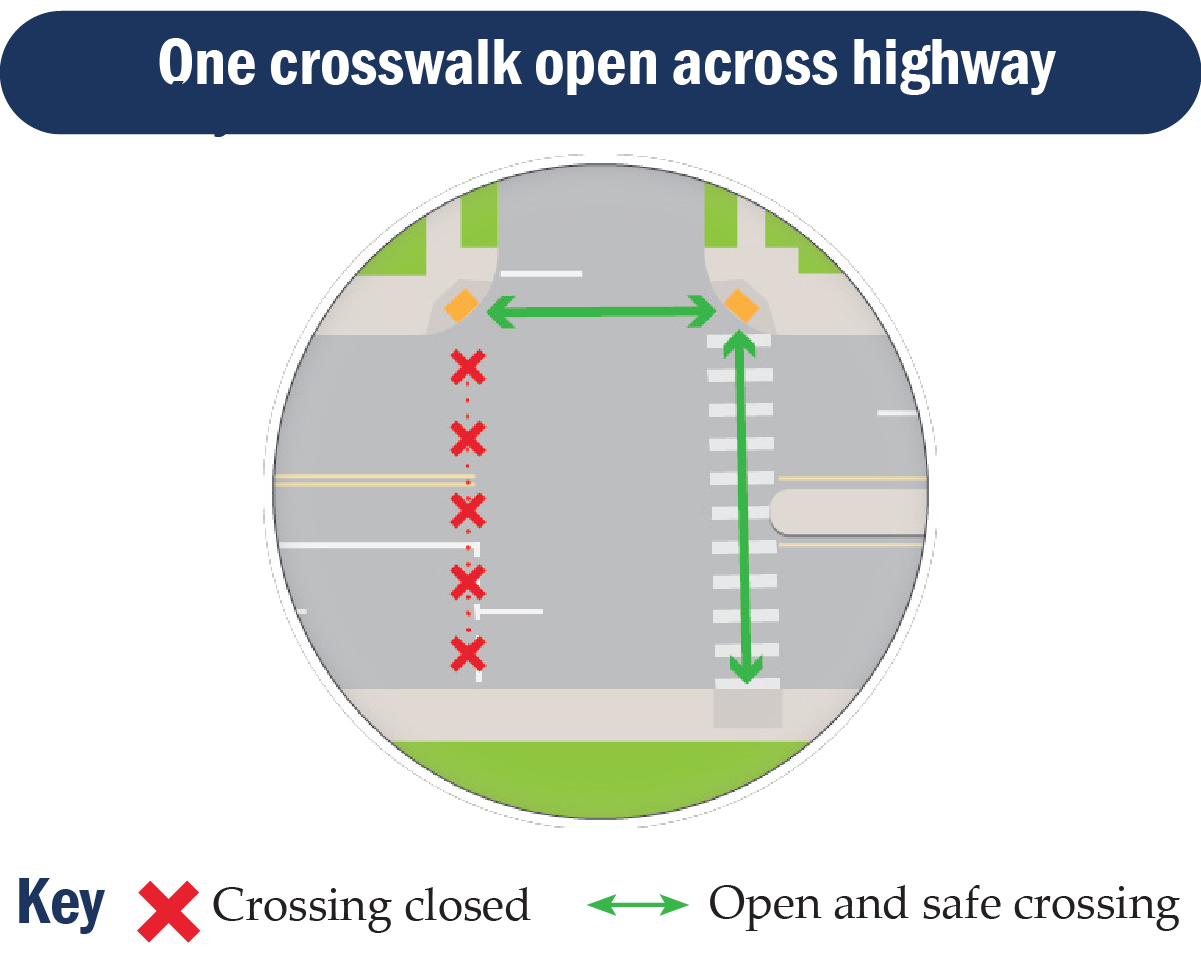Safe Crossings in Oregon
Many Oregonians rely on our sidewalk system to get around. Ensuring safe, accessible, and convenient crosswalks, crossings, and curb ramps is critical to making it easy for everyone to get where they need to go. In Oregon, every intersection is a crosswalk unless marked otherwise. This means that if a crosswalk is open, it should meet our safety and accessibility standards.
As part of our statewide curb ramp improvement effort, we also evaluated crosswalks and found that not all crossings are safe or provide equal access. Reasons may include crosswalks ending at or in close proximity to a driveway, a median island or landscaping in the crosswalk path, traffic signals that do not have pedestrian signals or push buttons, or they are at intersections that were never designed to be crossings. At all of these crossing locations, a safer crossing point already exists within 300 feet.
To ensure people cross a street at the safest point, we’re installing “crosswalk closed” signs to alert people that a crossing is unsafe or inaccessible.
Throughout 2023, our crews plan to install “crosswalk closed” signs at locations that have been identified as unsafe and inaccessible. This work is underway statewide with the first large batch of closures in the Portland metro area.
View the list of anticipated crosswalk closures within the Portland metro area.
We build safe spaces for people to walk or roll across our highways. Bringing curb ramps up to accessibility standards and closing unsafe and inaccessible crosswalks are tools we use to meet these standards.
The graphics below show some types of situations where crosswalks are closed. Notice there is still a safe way to cross the street in every situation. In some cases it only impacts one crosswalk at an intersection, in other cases there is a safe crossing nearby. Sometimes there is a barrier in the middle of the crosswalk making it impassable.
Above: A crossing is closed because there is a median barrier separating traffic lanes on Powell Blvd near 8th. Just yards away is a pedestrian bridge that provides a safe way to cross.

Above: A crossing may be closed because there are not ped signals at this location to cross the street safely. A crosswalk with accessible features such as pedestrian signals or a rapid flash beacon is a short distance away.
Above: A crossing is closed because it’s either not safe or not fully accessible. A marked crosswalk where it is safe to cross is within approximately 300 feet.
View a fact sheet with frequently asked questions.
About the ADA Program
The
ODOT ADA PROGRAM is working to bring more than 25,000 curb ramps throughout Oregon into compliance with Americans with Disabilities Act (ADA) standards. We are committed to new standards for accessible routes through work zones, outreach, and addressing public concerns. Everyone who uses sidewalks along our highways will benefit from this commitment and the improvements we make to the curb ramps.